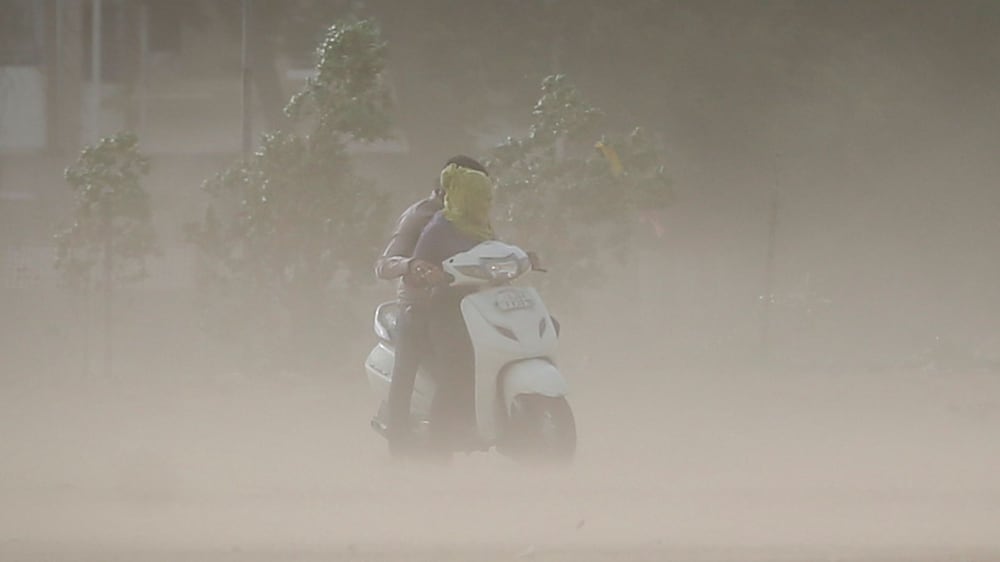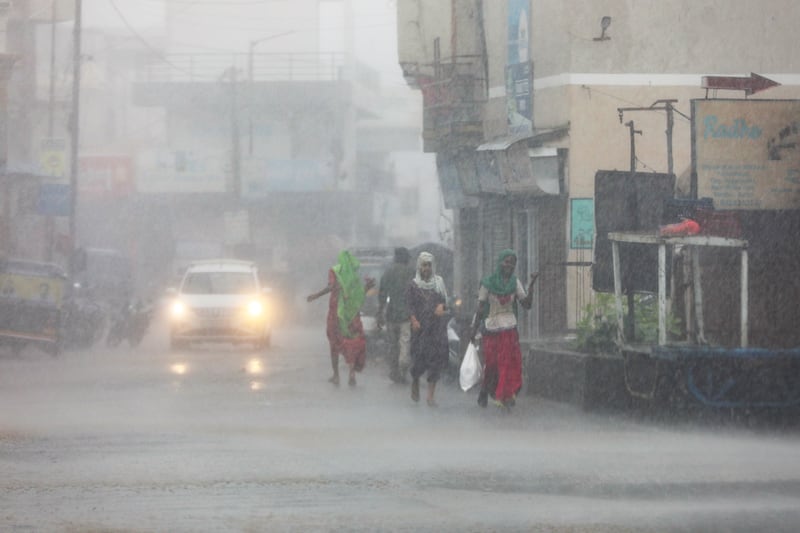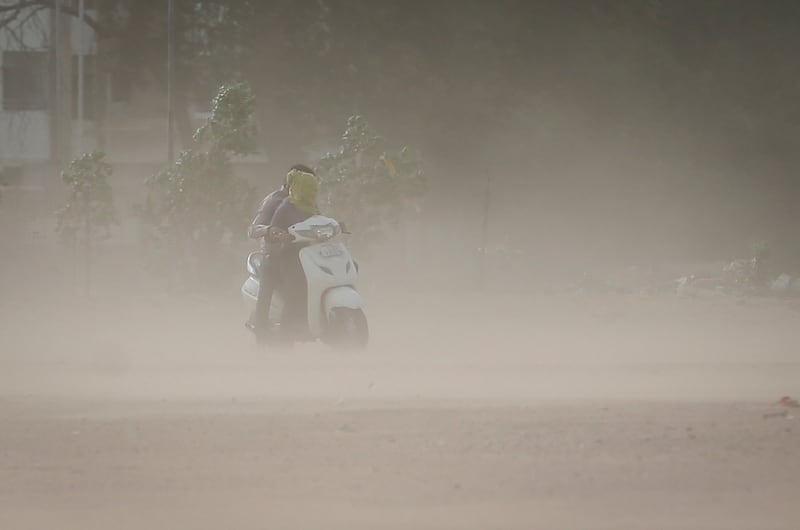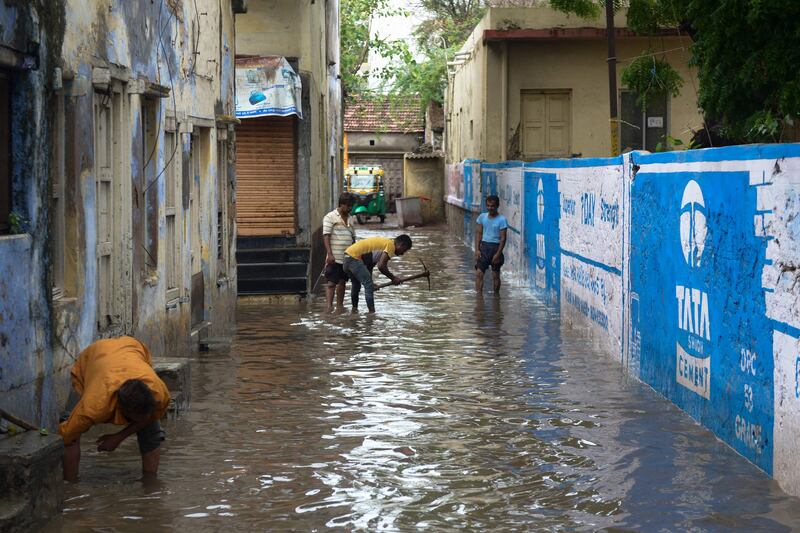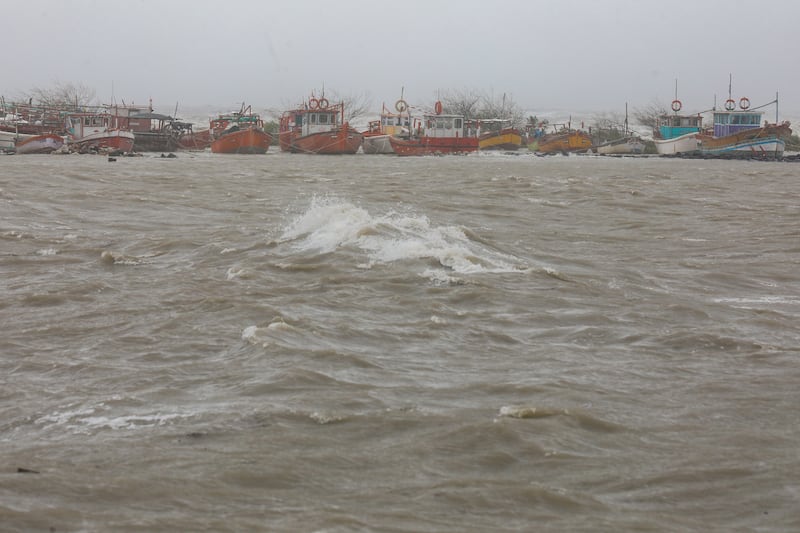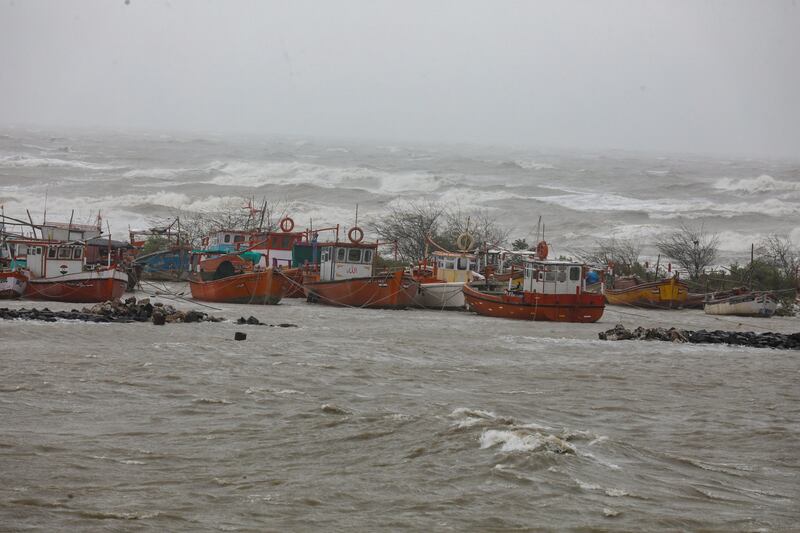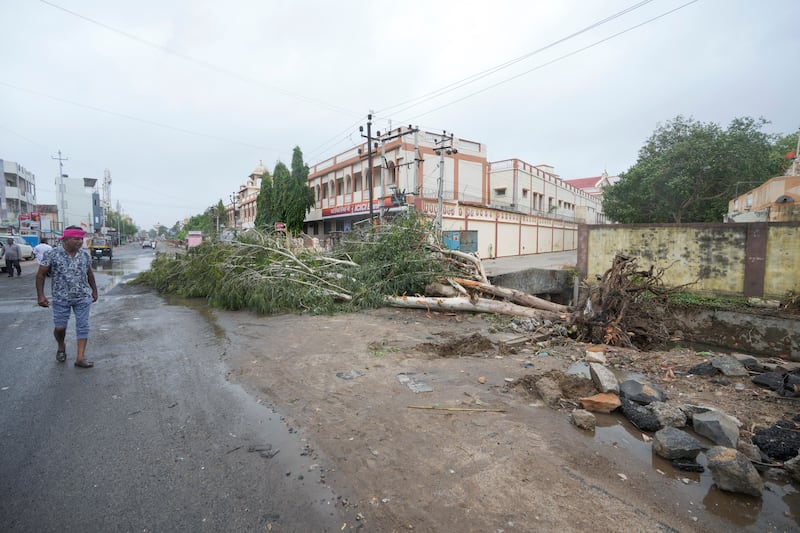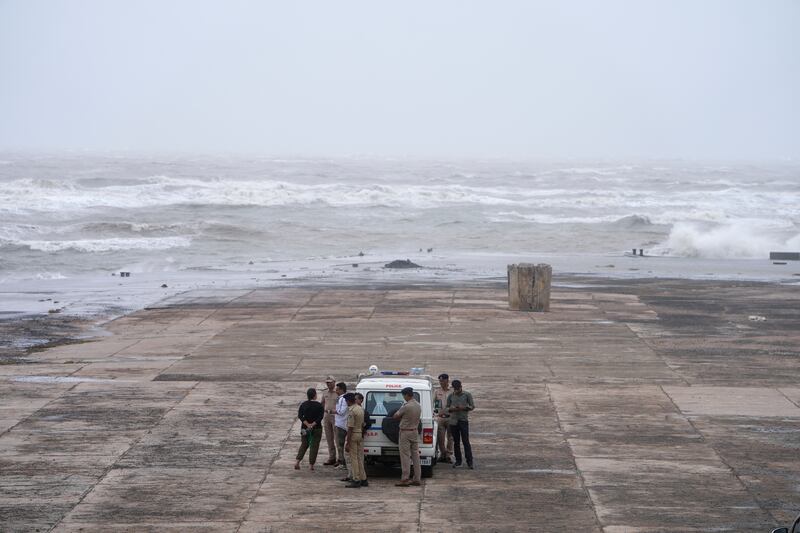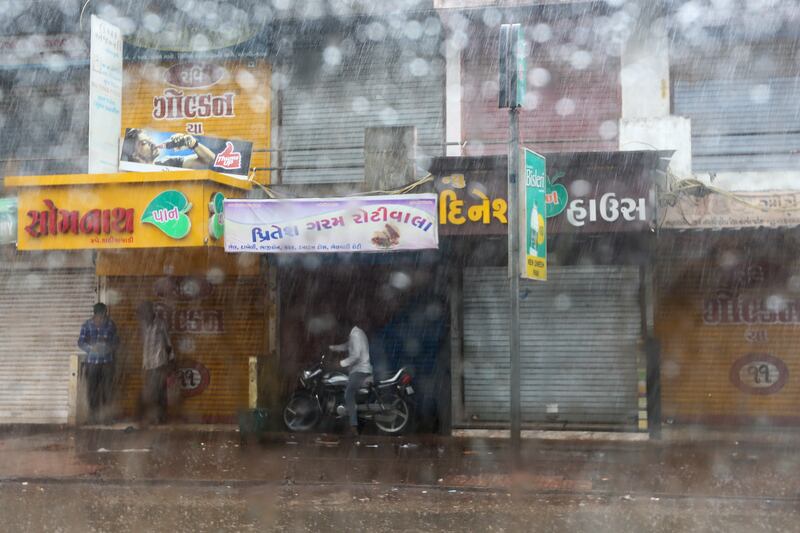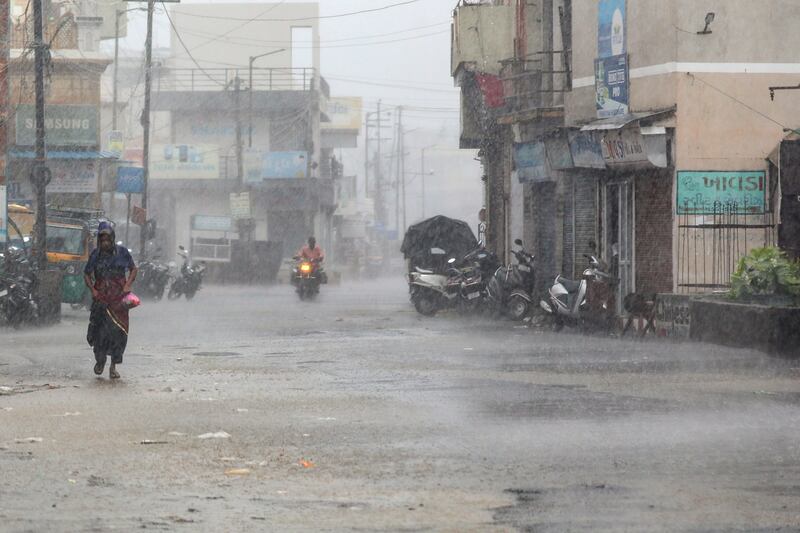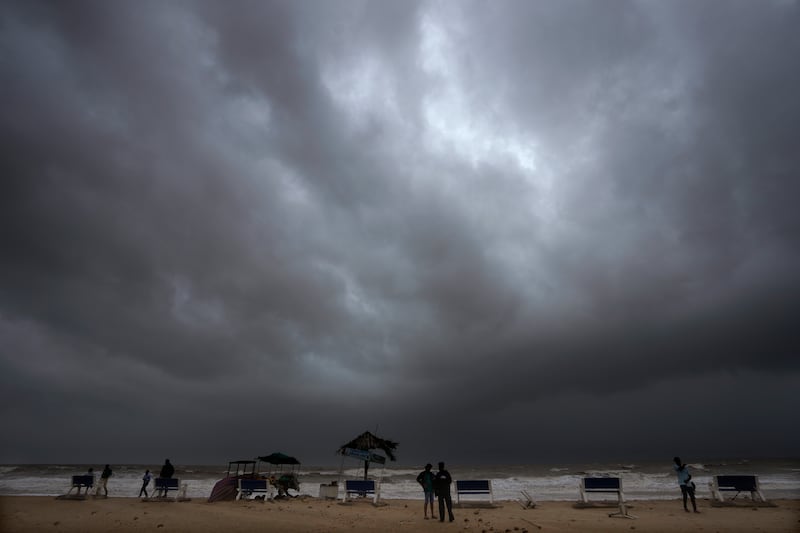Cyclone Biparjoy, which hit India’s Gujarat coast on Thursday evening, has weakened into a 'deep depression' and is further expected to lose strength in the next six hours, the India Meteorological Department said.
More than 180,000 people took shelter in the two countries, but some of Pakistan's evacuees prepared to return home as the storm weakened. Indian officials said electricity had been restored in some villages, while many others were still without power.
At least two people were killed and 22 injured in India’s western Gujarat state as Cyclone Biparjoy left a trail of destruction in its wake.
The severe cyclone, which was brewing in the Arabian Sea for more than 10 days, made landfall near Jakhau Port late on Thursday, with winds speeds ranging between 125kph and 140kph.
It wreaked havoc in coastal areas, uprooting hundreds of trees and electricity poles and causing power failures in at least 940 villages in the state.
The howling winds and dusty squalls also resulted in zero visibility in some areas.
Cattle-breeder Ramji Parmar and his son, Rakesh Parmar, 22, died while they were trying to save cattle stuck in a flooded ravine in Bhavnagar district, officials said.
The two were swept away by the water. Their 22 goats and sheep also died.
By Friday, the cyclone was diminishing in strength as people evacuated from their homes were allowed to start returning, Pakistan's disaster management authority said.
Indian officials said electricity has been restored in some villages, while many others were still without power.
You can follow the storm's progress below.
Cyclone Biparjoy latest updates map
Trail of destruction
The cyclone caused heavy rainfall that caused flooding and water-logging in low-lying areas. A hospital and a residential complex were submerged in Mandvi.
Television visuals showed a trail of destruction left by the cyclone, with uprooted trees and electric pylons blocking the roads.
Several teams of National Disaster Response Force are conducting road-clearing operations in affected areas.

“Wind speed is very high. Right now we are having rain everywhere. But the situation is under control,” said Amit Arora, the district collector for Kutch
“We have minor damage such as 200 electric poles have been uprooted, 250 trees uprooted, and we have cut power supply in five tehsils [administrative districts] as a precautionary measure,” he said.
Cyclone weakens into a storm
The federal weather department said that the cyclone started weakening about 2.30am local time and would move to adjoining Rajasthan state on Friday.
“Biparjoy [is] likely to weaken gradually into a cyclonic storm over Saurashtra and Kutch around noon and subsequently into a deep depression around evening of June 16,” the Indian Meteorological Department said.
Extremely heavy rainfall is expected for two days in Rajasthan.
Authorities had evacuated almost 100,000 people from coastal and low-lying areas to temporary shelters.
At least seven people were killed earlier this week due to gusty winds caused by the cyclone.
Three people, including two children, were killed in Gujarat due to the heavy wind while four teenage boys drowned in the sea at Mumbai’s Juhu Koliwada beach after they ignored high tides and rough sea warnings.
How did Cyclone Biparjoy form?
The storm formed over the Arabian Sea early this month, with Biparjoy being declared a severe cyclone by Oman on June 7. On June 12, the Indian Meteorological Department upgraded the storm's level to “extremely severe”.
It could become the Arabian Sea's longest lasting cyclone, thanks to the area's warm waters. Kyarr, the current longest, lasted nine days and 15 hours.
Oman warned the public to stay away from the coast and halted marine activities before the storm began heading north-northwest towards India and Pakistan.
A cyclone is formed in sea temperatures of at least 27°C when warm air and low pressure converge to make a superstorm.
They can cause 15-metre waves and often bring strong winds, heavy rain and storm surges that flood coastal areas.
Forecasting cyclones has developed and become more accurate thanks to satellite data, complex modelling and more sensitive measuring instruments.
Why is it named Biparjoy?
Cyclones are named by countries in the regions or the tropical cyclone basins affected. Biparjoy was the name suggested by Bangladesh from the North Indian Region list.
Names are retired if the cyclone they signify is deadly or becomes well known.
When did Cyclone Biparjoy hit India and Pakistan?
The cyclone began to make landfall in India at 7pm local time on Thursday, bringing high winds and rain. It is expected to reach Pakistan's flood-prone Sindh province by midnight.
The IMD said in its latest bulletin that part of the eye of the cyclone was over the land.
“Landfall process will continue till midnight after which the cyclone intensity will weaken and wind speed will reduce gradually,” said Mrutyunjay Mohapatra, director general at the IMD.
Mr Mohapatra said the cyclone was moving with a speed of 115kph to 125kph, which will start reducing to 75kph to 85kph over the next three to six hours.
More than 100,000 people have been evacuated from eight coastal districts in Gujarat and moved to shelters, the state government said.
Authorities said evacuations have been completed in Pakistan, where about 82,000 people were moved from high-risk coastal areas.
Noala Skinner, Unicef’s regional director for South Asia, said late on Thursday that more than 625,000 children were at immediate risk in Pakistan and India, where the cyclone made landfall.
“In Pakistan, Cyclone Biparjoy threatens a new crisis for children and families in Sindh, the province worst affected by last year’s devastating floods,” she said.
Temporary thatched houses could be completely destroyed while standing crops, plantations and roads were expected to face major damage, the IMD said on Wednesday. It added that railways could also face disruption.
Karachi, a port city of 20 million people, was not under immediate threat, but emergency measures were being taken to deal with winds and rain that are expected to batter the economic centre, Pakistan's Climate Change Minister Sherry Rehman said on Wednesday.
Wind and heavy rain from Biparjoy have already caused seven deaths in India.
The storm delayed the start of the monsoon season in Kerala, with cyclones sucking up moisture from the air around them.
Is climate change to blame?
Experts say climate change is leading to an increase in cyclones in the Arabian Sea region, making preparations for natural disasters all the more urgent. Pakistan is among the top 10 countries most affected by climate change, although the country’s contribution to global greenhouse gas emissions is less than 1 per cent.
A 2021 study found that the frequency, duration and intensity of cyclones in the Arabian Sea had increased significantly between 1982 and 2019.
In 1998, a cyclone that hit Gujarat state claimed more than 1,000 lives and caused excessive damage. A cyclone that hit Sindh province and the city of Karachi in 1965 killed more than 10,000 people.
